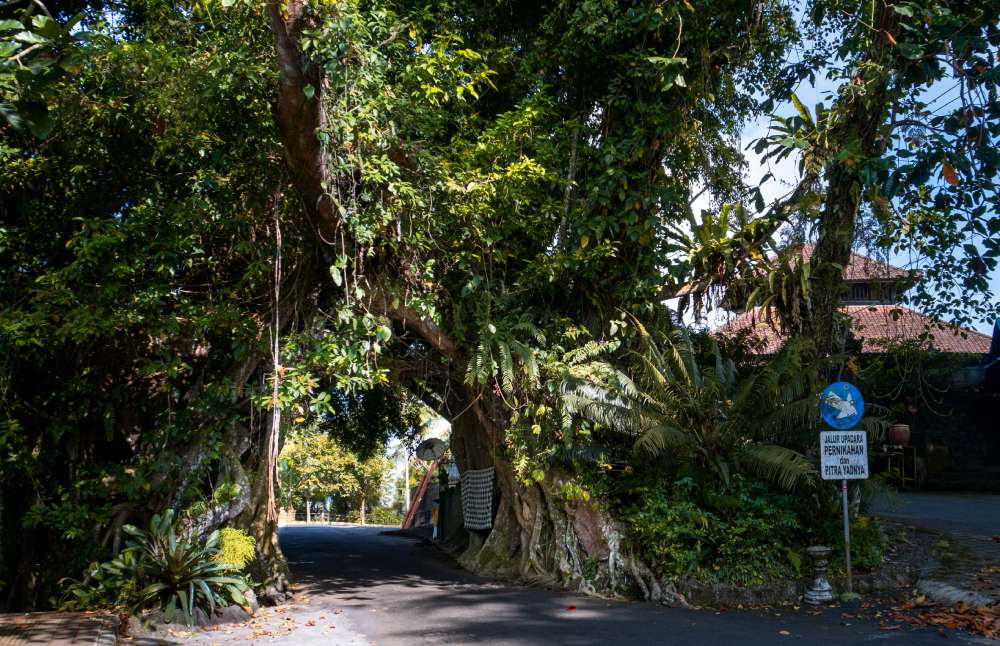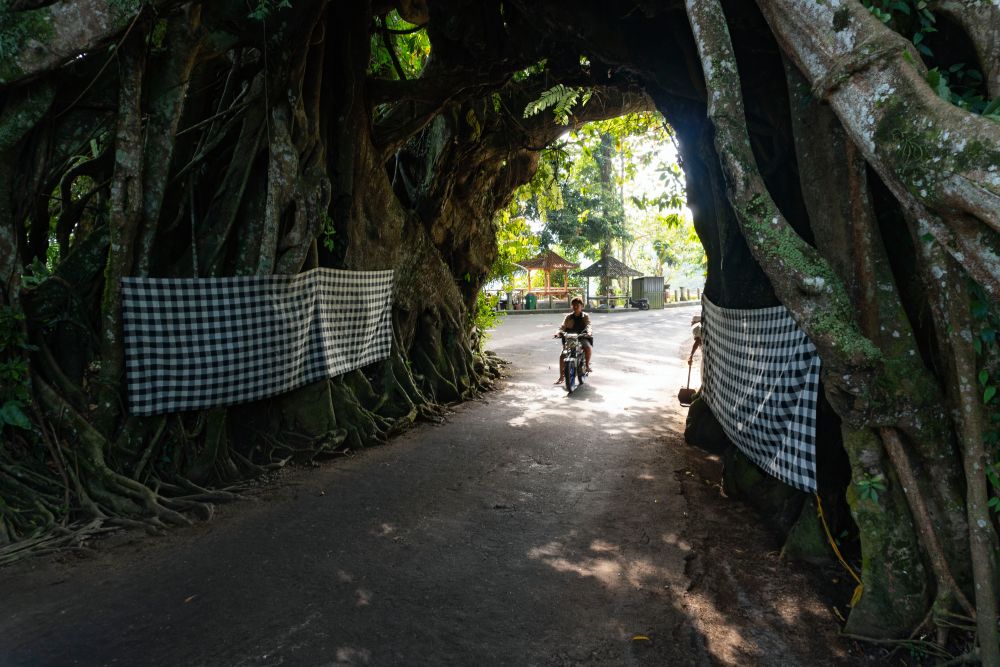
On the winding valley roads of Jembrana Regency stands a majestic and holy tree by the name of Bunut Bolong, a twisting and towering banyan that has a road running straight through its centre.
As you travel up north from Medewi, up the picturesque mountain route that cuts through the verdant Pupuan countryside, it’s impossible to miss the eye-catching landmark of Bunut Bolong. It is inevitable, in fact, as the road itself passes straight through this gargantuan and ancient tree.
Found near the village of Manggisari, the tree is aptly named, with bunut being a local name for the type of banyan it is, and bolong meaning perforated (having a hole through it). The tree itself is believed to be hundreds of years old, with the neighbouring temple — Pura Bhujangga Sakti — built in honour of one of Bali’s legendary priests, Dang Hyang Sidhi Mantra. It was said that he meditated on a large stone near the sacred tree (prior to it having a hole), and the villagers built the temple around or using this stone.

The tree rooted itself for centuries atop this steep mountain ridge, that plummets down to the steep valley basin to its left and right. This proved a challenge for the Japanese army, who were occupying Indonesia during the Second World War, as they had planned a road through the centre of Bali to cut from south to north. The narrowness of the ridge made it impossible to go around, and so the only way was through. Being a sacred tree, ceremonies were conducted to ask permission and forgiveness from the residing spirits, said to be two holy tigers. Finally, the thick roots were gauged out and a hole almost four-metres wide now occupies the bottom of the towering banyan. Thankfully, with the banyan trees’ characteristic prop roots that descend from its branches and bury into the ground, the tree continues to not only live, but grow wider, creating quite a magnificent botanical spectacle.
Being sacred, there are of course many myths surrounding Bunut Bolong. Firstly, it was believed that the previous location of Manggisari Village north of the tree was responsible for an outbreak of diseases and deaths many decades ago, and so the village and its residents were relocated south of Bunut Bulung — and not diseases have been reported since! Secondly, superstition dictates that married couples passing through the tree would be ‘cursed’ with hardship in their relationship, leading to divorce, fights, affairs, etc. So, a separate side road was later built for Balinese weddings, to avoid newly-weds being ‘cursed’ as they performed their matrimonial ceremonies; the same for funerary processions, which have also been diverted to avoid the onslaught of ‘incidents’ from Bali’s unseen world.






